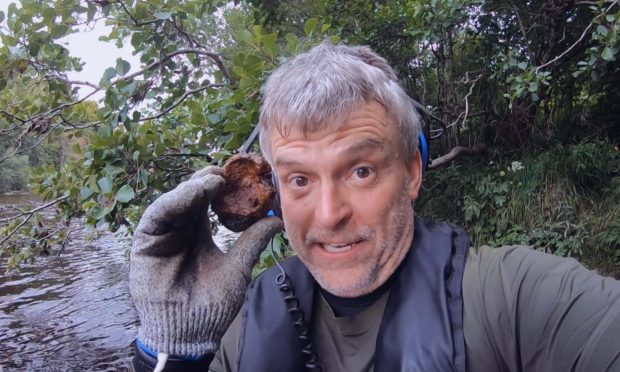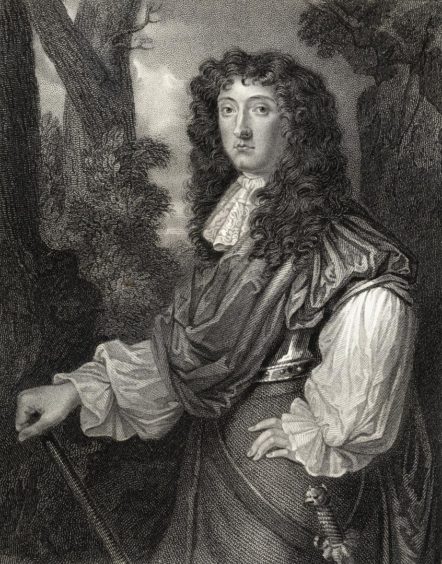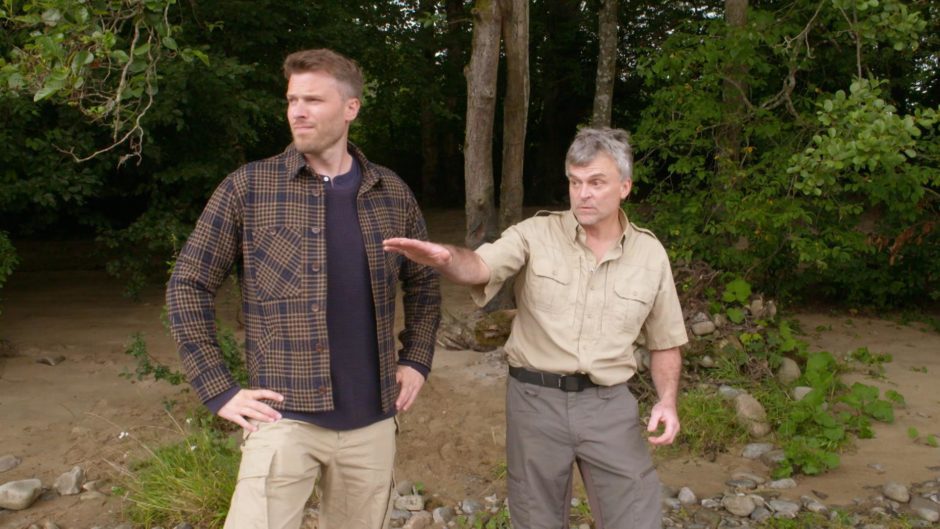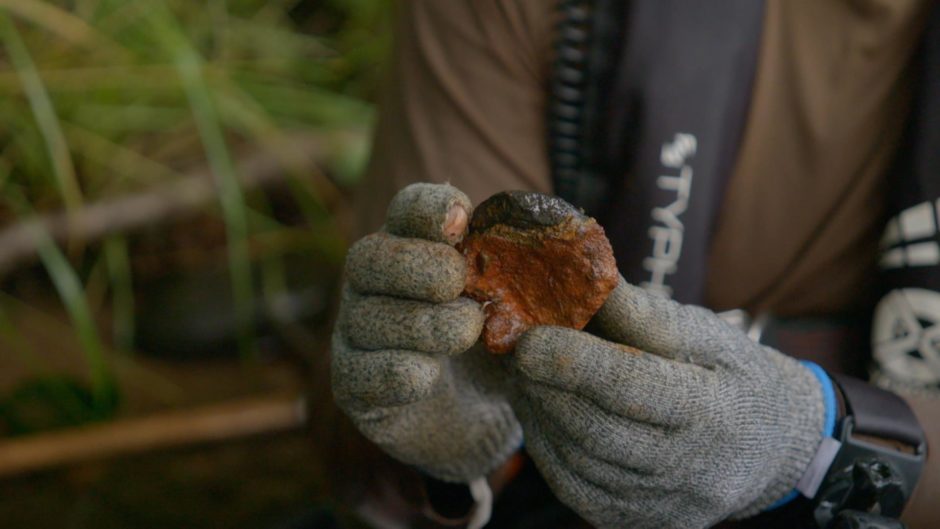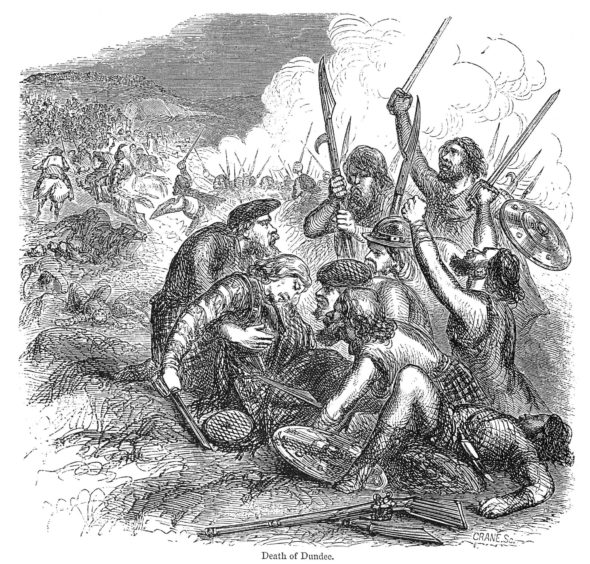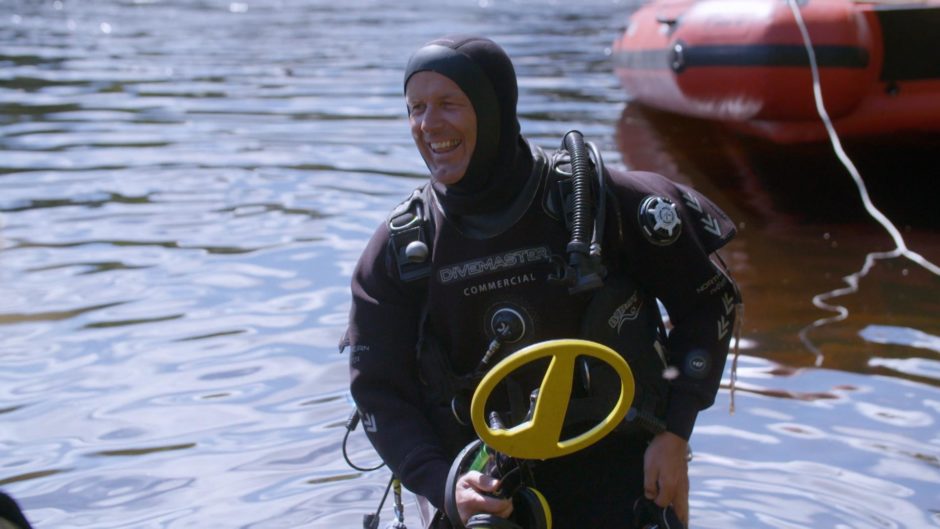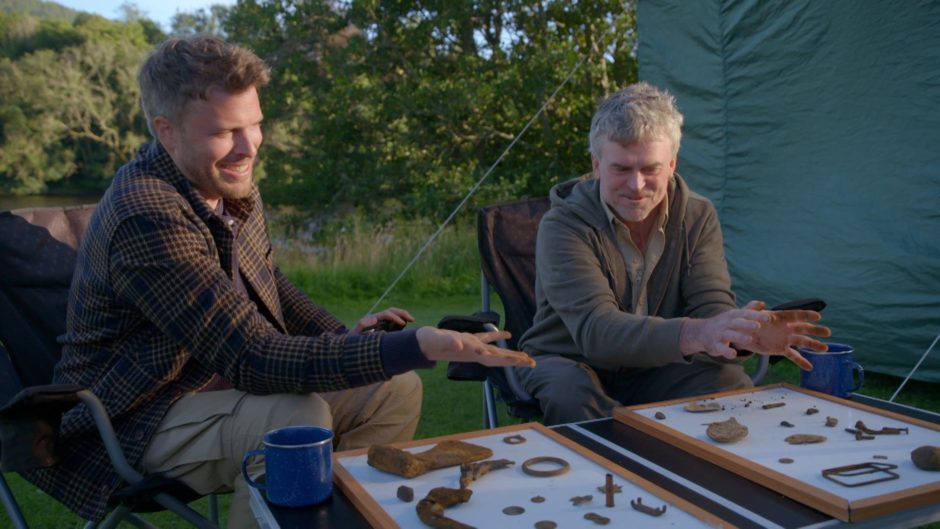River detectorists have unearthed the remains of a hand grenade which was thrown at the Battle of Killiecrankie.
The iron fragment was pulled from the River Garry in Perthshire after more than three centuries and the long-lost relic could “rewrite history”.
Only one fragment of a grenade of this sort had been unearthed before this since 1689.
Battle of Killiecrankie took place in 1689
The Battle of Killiecrankie was the first battle of the Jacobite wars in which the Jacobite forces secured a stunning victory over government forces at heavy cost, including the death of their leader, Bonnie Dundee.
It was also the first battle in which the plug bayonet was deployed and was the first battle in which the hand grenade was used on British soil.
The 17th century grenades were hollow iron spheres, slightly bigger than a cricket ball, packed with gunpowder with a fuse on the top-like a cartoon bomb.
The discovery of the hand grenade was made in episode one of the series River Hunters on Sky History, which is presented by river detectorist Beau Ouimette, TV presenter and keen swimmer Rick Edwards, and underwater archaeologist Gary Bankhead.
Gary said: “How many historians will turn their head when they hear news of the discovery of the hand grenade?
“It’s a pivotal part of that battle and it rewrites history.
“How important is that for the people of Killiecrankie and the local area alone?
“This will excite so many people and it’s something that people in Scotland should be incredibly proud of – we’ve discovered part of their history, their heritage and I’m proud to be part of the team that did it.
“It is a wow moment.
“For me personally it was an honour to be there.
“Killiecrankie is one of the iconic Scottish battles of the 17th century.
“It has such a rich history.”
Escape route was across the River Garry
Despite being outnumbered by over 1,000 men, Killiecrankie was the only battle the Jacobites ever won.
The two armies faced each other for nearly two hours before, finally, Bonnie Dundee gave the order to charge.
Gary said: “I undertook a lot of research before filming and went on a battlefield tour which brought home the scale of the battle and how many were involved on both sides.
“Just behind that is the River Garry which had to play a part in the battle, particularly when the government troops were routed and they were trying to escape.
“There was always a chance they would flee across the river.”
The highly effective Highland Charge meant that the battle lasted barely 15 minutes.
Fuelled by their victory, many of the Jacobites chased the fleeing Redcoats back through the Pass of Killiecrankie.
“Incredibly it was over in just a matter of minutes,” said Gary.
“The baggage train was located behind the government troops and that was probably just as important a target for the Jacobite clansmen because once their job was done their priority was to steal as much as they could from it.
“Put yourself in the boots of those who fought on that evening.
“They were fearful, they knew if they could get across that river they would escape with their lives.
“They crossed in the pitch black and the fragment of grenade found in the water suggested skirmishes were still taking place at the water’s edge.”
Grenadier troops were the SAS of their day
It was not until 1677 that the elite government grenadier troops were formed – the SAS of their day – who went into battle ahead of the rest of the troops.
Each grenadier carried a bag containing four hand grenades.
He would learn how to light and throw it from drill book drawings.
Gary said: “So maybe the grenadier troops who would have been throwing hand grenades were protecting the escape route of the survivors.
“So you could almost rewrite the history of the battle on that one find.
“It was just the most amazing moment to find the physical evidence of a fractured grenade, a weapon that had actually exploded and it is so clear what it is.
“It was just amazing.”
Gary went in search of treasure on the River Tay
The team were using state-of-the-art underwater technology to search the River Garry and the River Tay in dangerous and fast-flowing waters.
A musket ball from the slaughter was also discovered in the River Garry while a search of the River Tay uncovered what could be a sword from the battle.
“That was up there with the top three most challenging dives I’ve done,” said Gary.
“When I entered the Tay adjacent to Dunkeld Cathedral I literally hugged the river bed.
“It was the first time I didn’t put fins on my feet.
“I had to go down there and pull myself along on the rocks and keep as low as possible because the power of the water pushes you back up.
“It was a real physical challenge but very enjoyable.
“I had about 100m of the river to search adjacent to the cathedral and we knew given the marks of the musket balls on the cathedral that the clansmen had to have been in that immediate area.
“For me the relics from the battle, whether it was the musket balls, muskets or swords, very likely are still in that river and I was always positive I was going to find something.
“It was jet clear water and I saw a huge boulder and had a quick look and protruding out from one of these boulders for me it was clearly a sword.
“I was able to just push one of the boulders away and although the handle was missing it was the right length and width and to this day I still think it is one.
“At the time we left these objects with the archaeologists and the only real way you are going to find out if it was a clay more sword is by X-ray and there is still an outside chance it could be a blade from the period.
“The consensus of opinion at the time was that it may not have been a sword blade from the battle but it was still of some age, two to three hundred years old anyway, but it really needs that X-ray in a laboratory.”
River Tay was a tough challenge
Gary said the River Tay is a fast flowing river which can be incredibly dangerous and believes artefacts from the battle “will definitely still be there”.
He is a retired firefighter and every call he gets from the History Channel to be involved with the River Hunters he said it “opens up a new chapter in history”.
A live bomb was also recovered while searching in the River Arkaig near Fort William.
The battle relics from a clash between the Cameron and Campbell clans in 1645 will be shown in a future episode of the popular series.
The River Hunters are swimming in history exclusively on Sky HISTORY with the first episode premiering on Monday April 5 at 9pm. Sky HISTORY is available on Sky 123, NOW TV, Virgin 270 and TalkTalk 327. All episodes will be available on catch up services.
